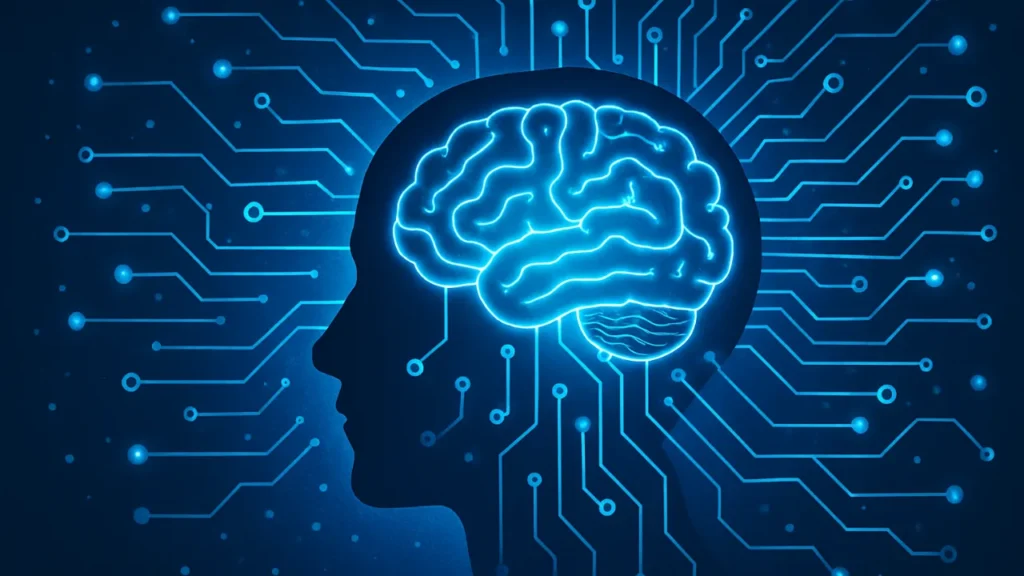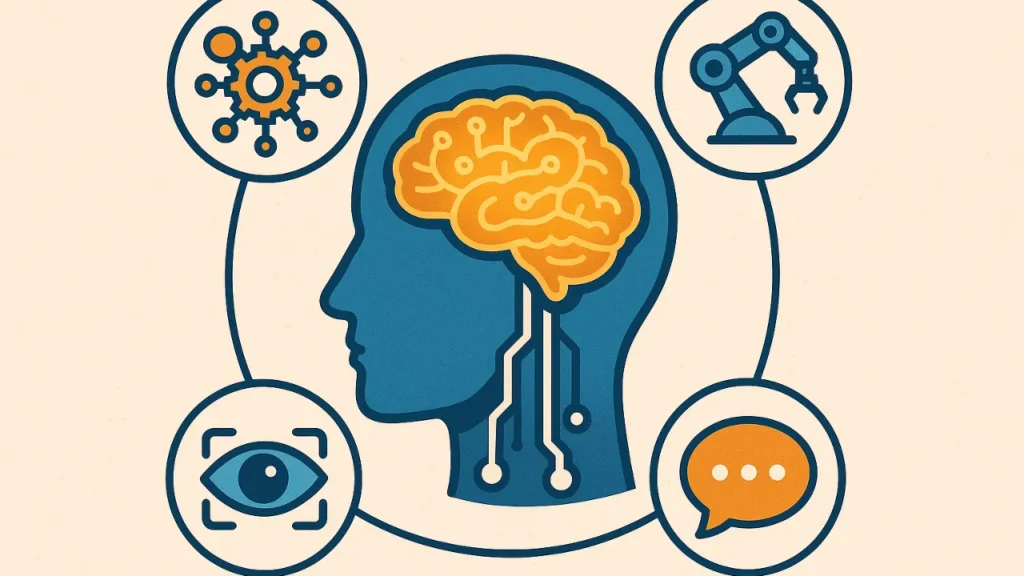Our lives are significantly impacted by artificial intelligence (AI), which is present in everything from self-operating factories to smartwatches. AI is pervasive and helps businesses of all sizes increase sales and satisfy their clients.
It’s critical to comprehend how AI operates because it is significantly altering large corporations.
Have you ever considered how artificial intelligence functions or how it enables self-driving cars and robots?
The components of artificial intelligence are covered in this article.
To avoid AI detection, use Undetectable AI. It can do it in a single click.
Table of Contents
Artificial Intelligence

Artificial Intelligence (AI) is the ability of computers or machines to behave intelligently like humans. A variety of technologies enable machines to see, think, act, and learn in a manner that is comparable to that of humans.
AI systems are made to identify and understand their surroundings, make choices, solve difficult problems, learn from historical data, and imitate patterns of behavior. They can do things like drive cars on their own or use facial recognition to secure devices due to these skills.
A variety of technologies, such as computer vision, natural language processing, and machine learning, are used in the field of artificial intelligence. Computers can now process and comprehend human language, learn from examples, and make well-informed predictions due to these advanced technologies.
Even though each AI technology is developing on its own, when combined with other technologies, data, analytics, and automation, it has the potential to completely change how businesses operate.
AI provides businesses with game-changing solutions to help them accomplish their objectives more successfully, from improving customer service to increasing supply chain efficiency.
Components of Artificial Intelligence

Learning
In the context of AI, learning is computationally implemented and is comparable to how humans learn. The trial-and-error approach is a key component of AI learning. The AI system tries a number of approaches to a problem and saves the ones that work in its database for later use.
Another type of learning is rote learning, in which the AI learns particular things by heart, like vocabulary, foreign languages, or methods for solving problems. Later on, this knowledge is applied in a variety of contexts and generalized.
Read Also >>> General AI Vs Generative AI
For instance, AI learns to recognize objects in images by examining and remembering patterns in a large dataset.
Reasoning and Decision Making
AI uses reasoning to analyze data and make decisions. This entails making deductions from predetermined scenarios, which can be classified as either deductive or inductive. While inductive inferences address circumstances where results are uncertain, deductive inferences entail drawing conclusions that are guaranteed.
For instance, chess-playing software employs reasoning to assess potential moves and decide on the most likely course of action.
Problem Solving
AI uses strategies like planning, search, and optimization to solve problems. While general-purpose approaches handle a broad range of diverse issues, special-purpose approaches customize solutions to particular aspects of a given problem.
AI problem-solving involves gradually minimizing the disparities between the current and desired states.
For instance, the problem of determining the most effective route between two points is resolved by route optimization algorithms in navigation systems.
Perception
By collecting and analyzing data from both artificial and natural sense organs, AI is able to perceive its surroundings. In order to analyze scenes, identify objects, and comprehend their relationships and features, the system internally processes this data. For tasks like speech recognition and computer vision, perception is essential.
For instance, self-driving cars use perception to identify traffic signals, pedestrians, and obstacles on roads.
Language Processing
In AI, language processing entails comprehending and producing natural language. AI can effectively interact with language through methods like text generation, machine translation, and natural language understanding.
This makes it possible for programs like sentiment analysis, chatbots, and language translation tools to operate without a hitch.
Example: AI’s language processing capabilities are demonstrated by virtual assistants that comprehend and react to spoken commands.
Six Essential Components of AI According to Forbes
Six fundamental elements, according to Forbes, are necessary for artificial intelligence. The following are the fundamental components of artificial intelligence that are required, even though they might not all fit within the traditional definition of artificial intelligence:
Applications for artificial intelligence: packaged programs that address business issues (e.g., financial planning, virtual agents)
Data Cleaning and Preparation: Prepare your data to be used by AI Model, Build, Train, and Run: A data science artist’s studio for creating, honing, and executing machine learning models
Features for consumers: speech, vision, and images, mostly utilized in consumer use cases
Natural Language Processing: The enterprise’s AI brain
Lifecycle Management: Overseeing the development and performance of AI models
Frequently Asked Questions about Components of Artificial Intelligence
What are the Basic Components of AI?
The basic components of artificial intelligence include language processing, perception, problem solving, reason and decision making, and learning. Each of these components plays a significant role in the overall functionality of AI systems.
How Do Machine Learning and Deep Learning Fit into AI?
Machine learning is a subset of AI that enables systems to learn from data and improve over time. Deep learning, on the other hand, is a type of machine learning that uses neural networks to analyze various factors of data.
What are the Branches of AI?
The branches of artificial intelligence encompass a wide range of fields, including natural language processing, computer vision, robotics, and expert systems. These branches contribute to the diverse applications of AI in the modern world.
What is the History of AI Development?
The history of AI dates back to the mid-20th century, marked by significant milestones such as the development of the first neural networks and the introduction of machine learning algorithms.
What are Some Common AI Applications?
AI applications can be found in numerous industries, including healthcare, finance, and entertainment. Examples include virtual assistants, recommendation systems, and autonomous vehicles.
How Can We Leverage AI Ethically?
AI ethics is an important consideration in the development and use of AI systems. Leveraging AI ethically involves ensuring fairness, transparency, and accountability in AI applications.
What are the Types of AI?
AI can be categorized into two main types: weak AI, which is designed for specific tasks, and strong AI, which aims to replicate human intelligence across various domains.
What Role Do AI Agents Play in AI Systems?
AI agents are entities that can perceive their environment, make decisions, and take actions autonomously. They are crucial in the development of intelligent systems that can interact with the world.
Conclusion: Components of Artificial Intelligence
We can confidently state that artificial intelligence (AI) is poised to be the future when we examine the many dimensions of intelligence, decipher how AI functions, and investigate its varied learning approaches. Understanding the components of artificial intelligence is worthwhile since it proves to be a reliable ally in intelligent automation.
Artificial intelligence has an impact outside of the business world as well, providing a means of improving services and forging closer bonds with customers. AI is the foundation for automation, from voice-activated home systems to self-driving cars, and its uses extend beyond commercial applications.
Adopting a fundamental understanding of AI is a means of navigating the changing terrain of efficiency and innovation, not just an investment in knowledge.


